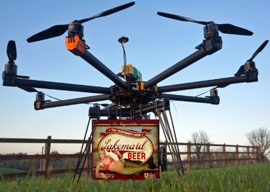
February 06, 2014

As cultures ancient and modern continue their clash along the bleeding arc from Timbuktu to Afghanistan, America’s policy mandarins are searching for a way out of a dilemma that has existed since the First Crusade. The more men at arms sent into Islamic territory, the greater the indignation generated. A thousand years has not reduced the alacrity with which pious and evangelical Muslims respond to the appearance of armed unbelievers”from the 11th century to the 21st, they have seldom taken long to boil over into insurrection.
The traditional root of this response can be traced to Islam’s own military expansion, and it comes built into cultures as structurally diverse as the Tuareg of the Sahara and the seagoing sultanates of Oman and Borneo. It is a tendency so deeply embedded that the only colonial cultures to coexist with it for long, from the French occupation of Algeria to the Crusader kingdoms of the Levant, have needed civilian transmigration atop military occupation to survive.
But while such cultural transplants have survived rejection for a century (or three, in the case of the kingdoms of Jerusalem and Cyprus), occupying powers unprepared to repopulate Islamic lands and expel recidivists have been expelled in a few generations.
One metric of the intensity of this cultural repulsion is the fate of earlier traditions of food and drink under Islam. Even though the Arabs” language gave the world the word “alcohol,” their religion took it away.
Yet if visitors dig deep enough, they will discover as Frankish Crusaders and French and British armies did, that there are bottles for sale in every bazaar in paynimry”Dar al-Islam is just another name for an archipelago of bootleggers spanning the seven seas.
Though ostensibly dry as desert landscapes, Islamic nations float on lakes of home brew, like the cognac atop a pousse-café. Despite the constant vigilance of the mullahs who run Iran, there is plenty of Shirazi wine in Shiraz, and Lebanon and Syria remain awash in absinthe’s ancestor, raki. Libyans and Tunisians secretly tipple date brandy, and even Mauritania’s firebrand marabouts have been known to fuel their sermons against the infidel with a swig or two of palm toddy. Get used to it. Jihad is thirsty work, and the stuff those cupbearers are handing out in Persian miniatures ain”t cold tea.
The quest to quench the holy warrior’s bone-deep thirst brings us to the bleeding edge of political science. Many analysts ponder how to stanch the decade-old hemorrhage that is the occupation of Afghanistan. Never mind its misbegotten origins in neocon hubris or the rejected lessons of failed invasions past. Let us be mission-oriented in considering how to pacify this troubled land. As I am an American scientist, I shall naturally look to high technology for a solution. The way out of our Afghan impasse is to reinvent the drone as part of the SBI: the Strategic Beer Initiative.
The SBI draws its inspiration from a Wisconsin firm at the cutting edge of aerial warfare, Lakemaid Beer. The producers of “the hottest beer on ice” have produced a Super Bowl-quality commercial demonstrating how “octocopters” or even smaller user-friendly flying drones can loft frosty six-packs over frozen lakes to slake the thirst of ice fishermen. Before the air-control freaks of the FAA could put the kibosh on this splendid display of Yankee”or at least North Woods”ingenuity, the ad went viral. What’s not to like about hearing “The Ride of the Valkyries” play as drones cute as Star Wars robots swoop down delivering not death from above, but life-giving lager?